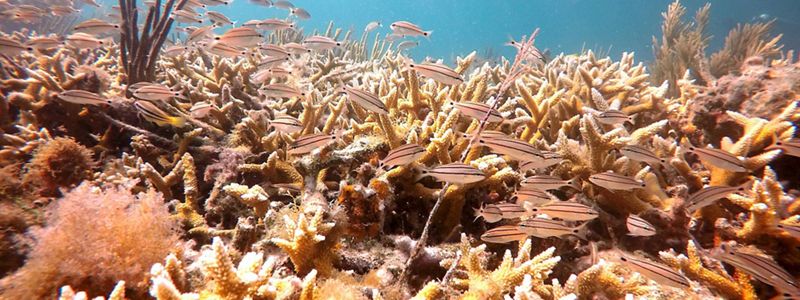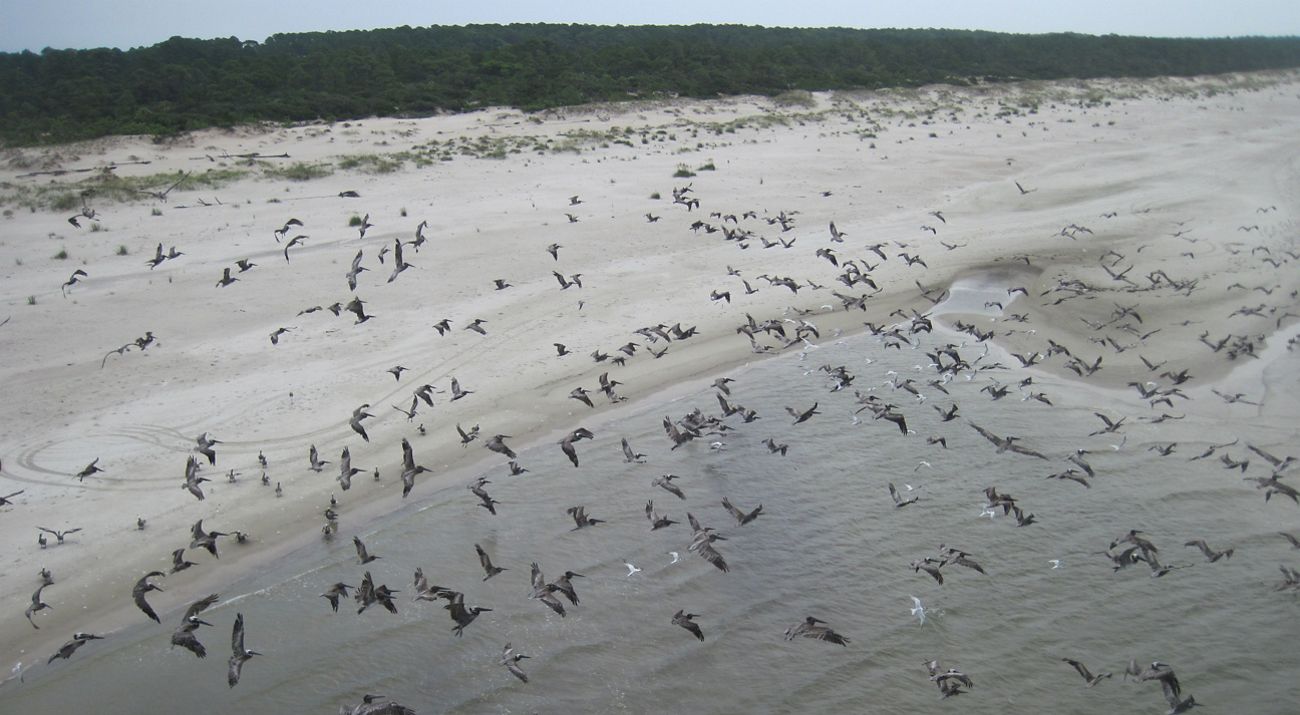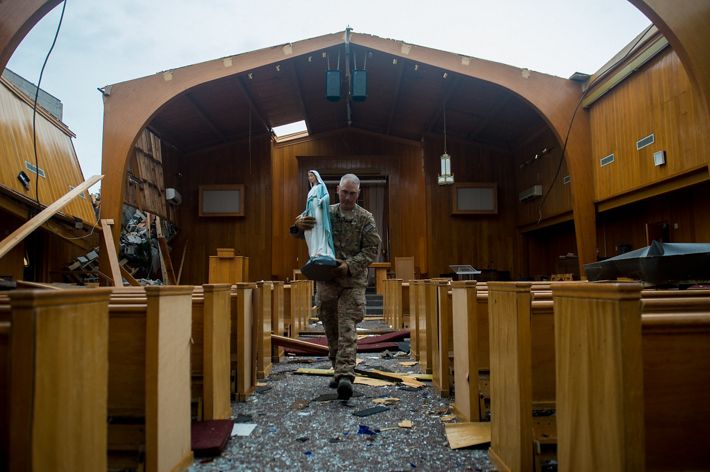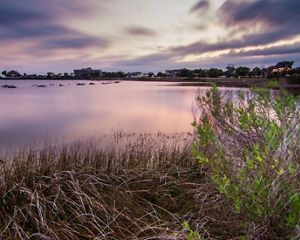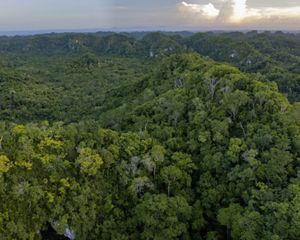Defending the Gulf With Nature
TNC and the U.S. Air Force team up to find natural solutions to climate impacts at Tyndall Air Force Base.
When Category 5 Hurricane Michael hit Tyndall Air Force Base in Bay County, Florida, in October 2018, the result was catastrophic. The hurricane damaged nearly every building, almost beyond repair, and there was significant flooding. Congress paused to consider if Tyndall—with an estimated five-billion-dollar price tag in damages—should even be rebuilt.
Today, however, the reconstruction efforts continue, with natural solutions to building coastal resilience top of mind. A partnership with The Nature Conservancy is facilitating their execution.
Quote: Jeff DeQuattro
“The plan is for Tyndall to be ‘the installation of the future.’”
“The plan is for Tyndall to be ‘the installation of the future’," says Jeff DeQuattro, TNC’S Director of Restoration in the Gulf. DeQuattro, along with partners at the base and across TNC, is leading the efforts to buffer Tyndall against sea level rise and future storms. In 2021, TNC received a $4.8 million Department of Defense (DoD) grant for data collection, modeling, engineering and permitting for four coastal resilience projects—just the first phase of a long-term, large-scale $22 million project that will build Tyndall back as a nationwide model for how military bases, and coastal communities at large, can meet climate change and the resulting storms and sea level rise. In 2024, Tyndall Air Force Base was honored with a Federal Government Sustainability Award, which represents how far the partners have come since the devastating storm.
As an Air Force base, Tyndall is invaluable for U.S. military operations. “There are multiple missions vital to the Air Force that are executed at Tyndall,” says Jeff Mixson, a contracting officer in the Air Force who has facilitated the partnership with TNC. For example, Tyndall houses the Air Battle Management schoolhouse, the weapon evaluation program that tests munitions and is a hub of civil engineering expertise for the Air Force. Geographically, it offers direct access to the Gulf for weapon testing and training without flying over any private land—access lacking at most military bases. Before Hurricane Michael, some 26,000 people relied on the base daily, and 37% of the economic activity in Bay County was related to Tyndall.
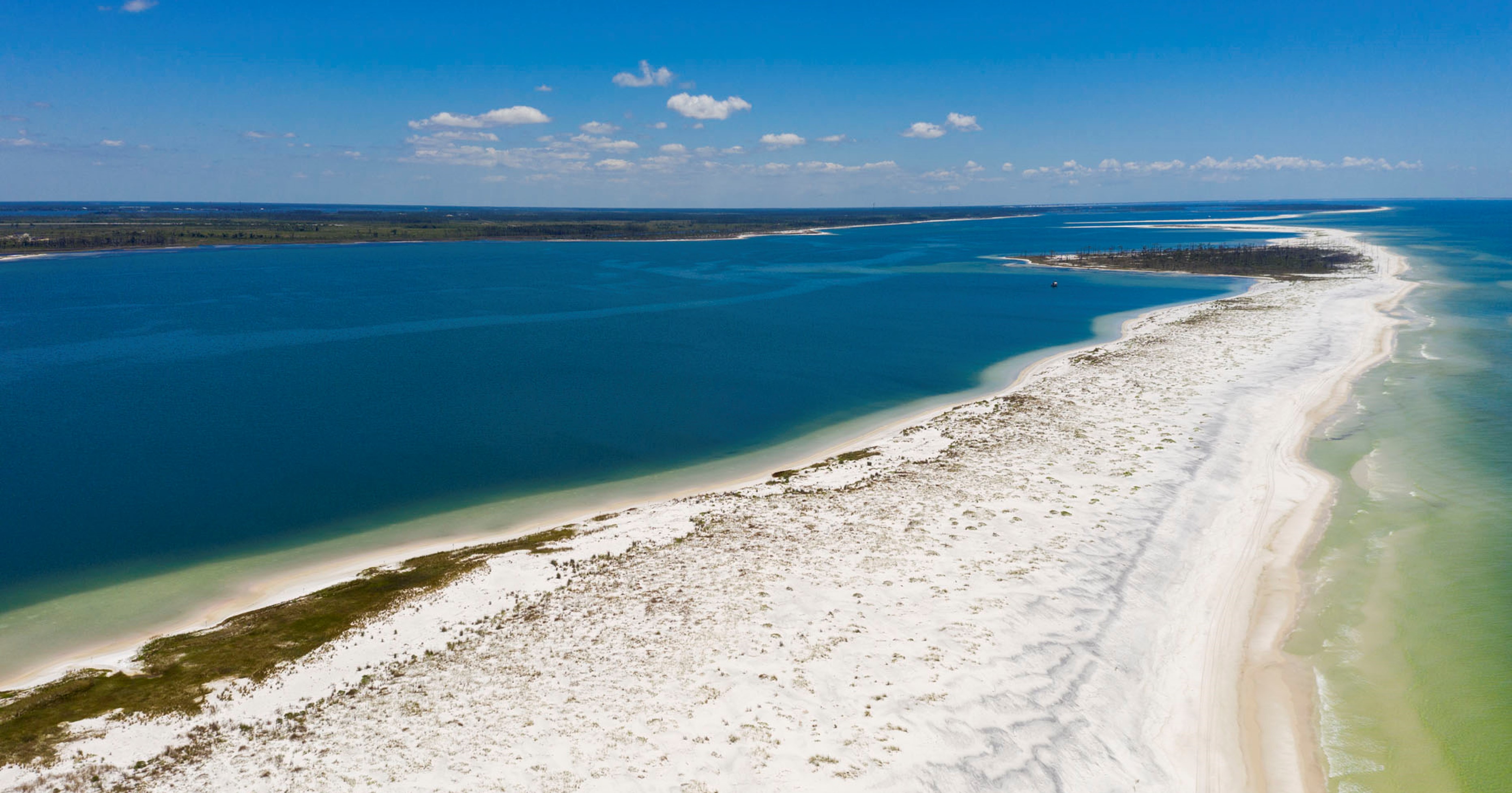
An Ecological Treasure
Ecologically, Tyndall is also a treasure. It sits on a peninsula with 40 miles of shoreline on the Gulf and clusters of barrier islands. Its 29,000 acres of longleaf pine, beach dunes, grasslands, wetlands and brackish estuaries are a swathe of biodiversity, hosting everything from red-cockaded woodpeckers to diamondback terrapins, oysters, crabs and all manner of fish and other marine life.
Though nothing will fully protect any coastal community from another Category Five hurricane, Tyndall is rebuilding with elevated and strengthened buildings—examples of gray infrastructure solutions—and by investing in green solutions as well. “Hurricane Michael gave Tyndall a clean slate, and they can build in the most up-to-date way,” says retired Brigadier General Bob Barnes. Barnes, an expert in how climate change affects national security, serves as an advisor and facilitator for TNC’s partnership with the DoD. “Tyndall is a living laboratory on this combined approach to strengthening the climate resilience of a military installation, inside and outside the fence line, involving both gray and green approaches.”
By the Numbers
-
$4.8M
DoD grant for coastal resilience science
-
37%
37% of economic activity in Bay County
-
40
40 miles of shoreline on the Gulf Coast
-
29,000
acres of biodiverse habitat
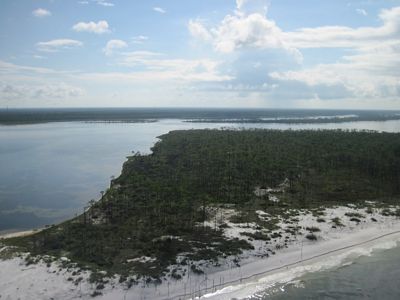
Today, TNC’s work at Tyndall continues to advance sustainable practices that include:
- A living shoreline
- An oyster reef breakwater
- A submerged shoreline
- Seagrass plantings
Together, these installations break wave energy and absorb floodwaters in vulnerable areas. They also reduce erosion, protect hundreds of acres of land and coastline, support wildlife and expand recreational opportunities for those on base.
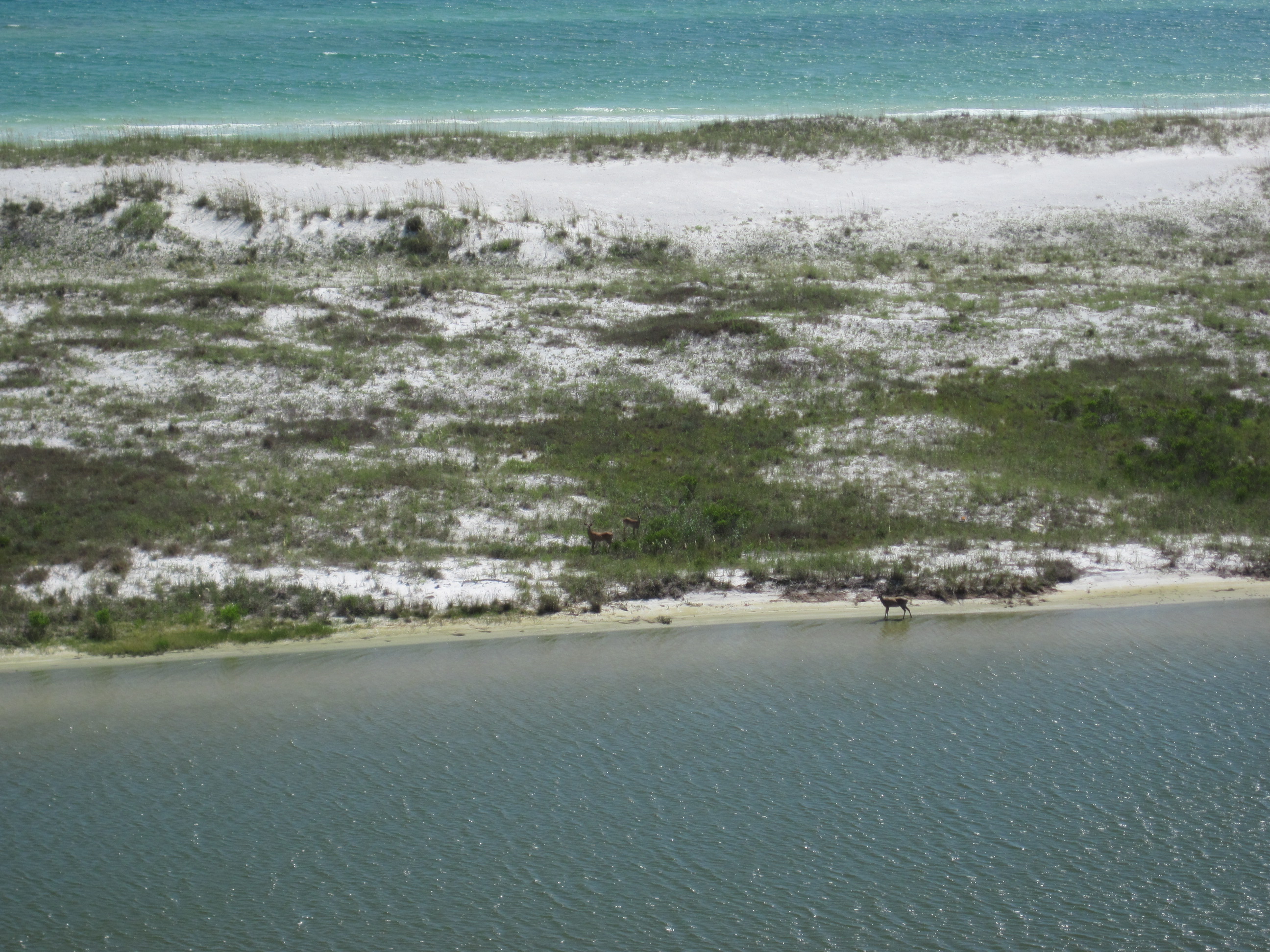
Coastal Resilience Through Living and Submerged Shorelines, Oyster Reefs and Marshes
A living shoreline is a structure composed of natural materials, like plants, rock and sand, that stabilize eroding coastlines. At Tyndall, the living shoreline will rise above the water and occupy a length of coast fronting the base’s dock and fuel depots. Once deployed, the living shoreline will measure 1,500 feet long, with plans to lengthen it in the future. “As soon as we put something in the water, it will immediately attract animals. And if the science and engineering are correct, over time, it will begin producing things like crabs and fish on its own rather than simply being an attractor,” explains DeQuattro.
Currently, TNC's partners at the University of Florida are gathering data to inform the shoreline's design. "Every living shoreline looks a little bit different," says Dr. Christine Shepard, TNC's Director of Science in the Gulf. "The final design will depend upon the engineering studies and the information we collect about the wind and the wave energy there, both on a day-to-day basis and during extreme events like hurricanes."
Like the living shoreline, the oyster reef breakwater will dampen wave energy and prevent erosion in a vulnerable area of Tyndall's coast. But while the living shoreline will act as a general attractor for marine life, the oyster reef breakwater will specifically attract oysters. "The Gulf is probably the last place in the world that has a somewhat healthy population of oysters," explains DeQuattro; 85% of the bivalves have been lost worldwide, but the Gulf still retains 50%, making it an ideal place for restoration work. "It's hard to restore oysters in a place where you don't have any oysters left, but here, if you build the right structure, they will come." When completed, 1,000 feet of oyster reef breakwater will sit offshore from the drone airstrip, hosting the bivalves on a substrate suitable for oyster recruitment.
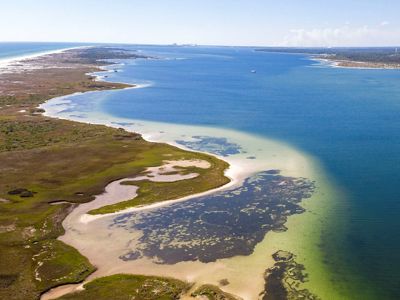
A submerged shoreline—an underwater breakwater structure—is designed to reduce wave energy in order to protect the coasts against erosion and to trap traveling sediment to help restore beaches. At Tyndall, it will be located in a volatile area vital for both training and recreation—behind a group of barrier islands that Tyndall owns, where wave and wind energy and currents are especially strong. This area, known as Buck Beach, has already lost roughly 60 acres to erosion. The submerged shoreline—which will be complex enough to double as a foraging and cover area for fish, crabs and other marine life—will allow sand to accumulate and begin building back the lost acreage.
Nature-based Coastal Resilience Solutions In Practice
Nature-based coastal resilience solutions have been successful elsewhere—in 2000, Project GreenShores in Pensacola, Florida created a series of offshore limestone, recycled concrete and preformed concrete breakwaters, as well as five islands made from 35,000 cubic yards of sand and marsh grass. Since then, Hurricane Ivan (Category Four) and Hurricane Dennis (Category Three) both made landfall, and the areas behind these installations sustained less damage than areas without living shorelines. A TNC study after Hurricane Michael found that vegetated shorelines in the communities near Tyndall held up to a named storm just as well as hardened structures like bulkheads or seawalls—while costing much less to repair.
But there has never been a large-scale coastal resilience project at a base like what is happening at Tyndall now. TNC’s grant comes primarily through the DoD’s Readiness and Environmental Protection Program (REPI) and Bay County, Florida’s RESTORE Program. The primary mission of the program is to protect the military’s ability to test and train—a goal that often coincides with protecting the land surrounding bases to prevent encroachment and incompatible development. That common interest between the DoD and TNC has a long history—they’ve been working together to protect land and endangered species habitat since the late 1970s.
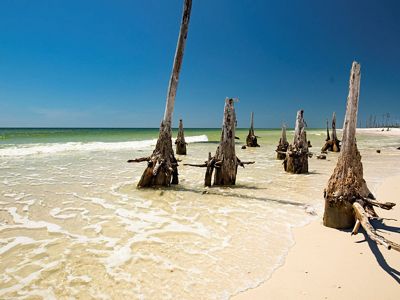
A Blueprint for Coastal Resilience
"Today, the threats posed by climate change, such as sea level rise or storm surge, can adversely impact the military, as evidenced dramatically by what happened at Tyndall," Barnes says. "And so now the military works with folks like TNC to strengthen the climate resilience of the military installations against those kinds of eventualities."
The DoD does not take climate change lightly; the 2021 Climate Adaptation Plan states that the DoD "has identified climate change as a critical national security issue and threat multiplier and top management challenge." Barnes, Mixson and their TNC partners are hopeful that Tyndall will not be the last military base to implement large-scale green solutions: what happens there will shape how Congress approaches other bases in the future.
"What we're doing at Tyndall is creating the blueprint for how other DoD bases can execute coastal resilience," says Mixson. The blueprint begins with research; TNC's partner, the University of Florida, is collecting data on wave height, sediment and current testing, as well as conducting a biological baseline study. The U.S. Naval Research Laboratory, another TNC partner, provides access to cutting-edge technology for measuring deeper water currents and sea level change. Plus, the Navy's previous storm data and its ability to deploy during hurricanes to record data will be invaluable in developing the project designs.
Quote: Jeff Mixson
“What we're doing at Tyndall is creating the blueprint for how other DoD bases can execute coastal resilience.”
A Win-Win for Military and Conservation
Once in place, the living shoreline, oyster reef breakwater, submerged shoreline and supplemented wetlands will continue to grow and protect both the environment and the military interests at Tyndall. "When these things become self-sustaining, we don't have to keep pouring money into them," points out Barnes. "It's not a sea wall or levee that will have to be strengthened and repaired.
These projects serve multiple purposes, says Mixson. "We have to put in the initial work, but the end is something that creates a positive value and not just from a dollar standpoint. You've got an insurance policy for the base. You reduce your maintenance life cycle cost. It provides outdoor recreation possibilities. It creates habitat for wildlife."
In other words, it's a win-win for the military and the environment.
We Can’t Save Nature Without You
Sign up to receive monthly conservation news and updates from Florida. Get a preview of Florida's Nature News email.
